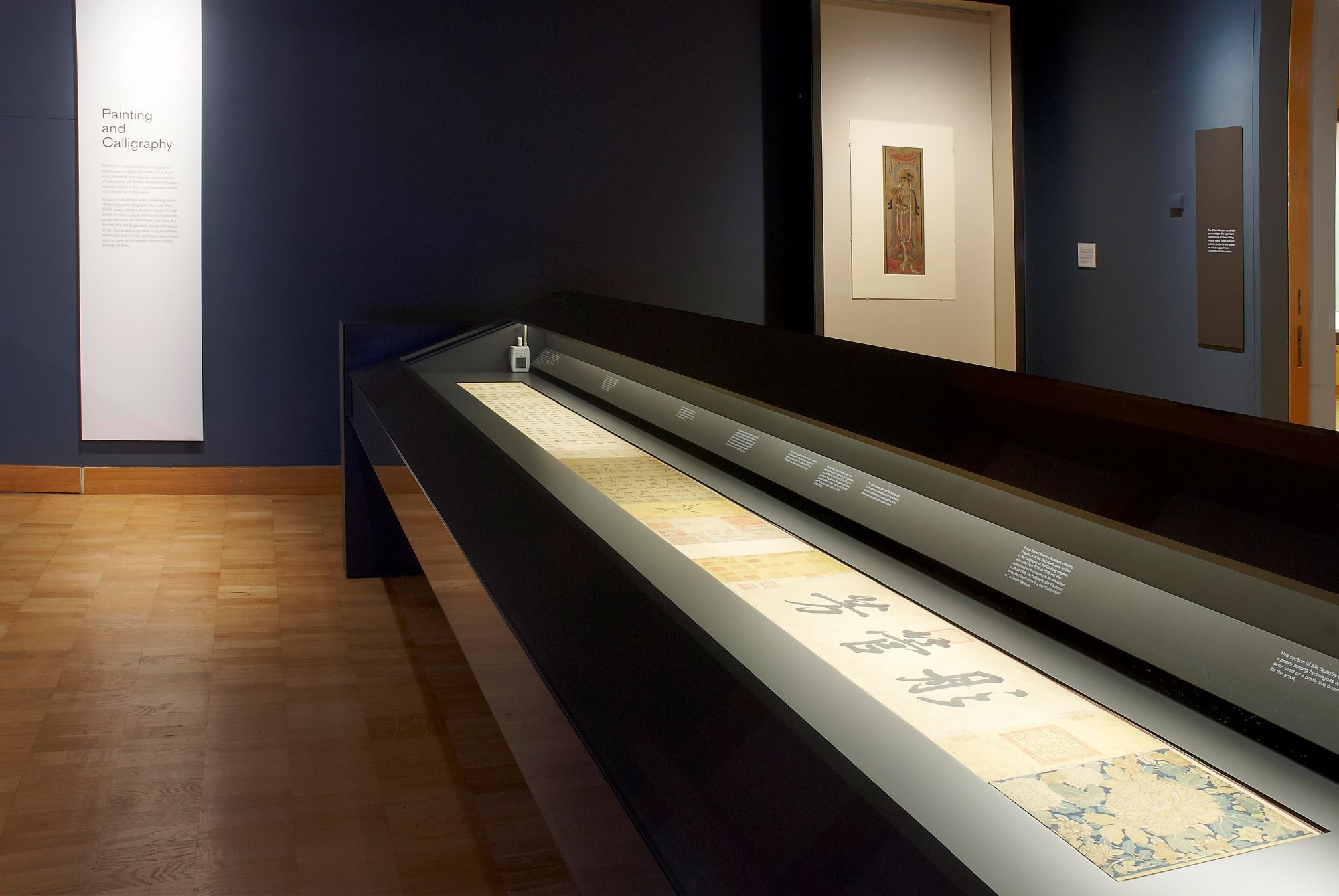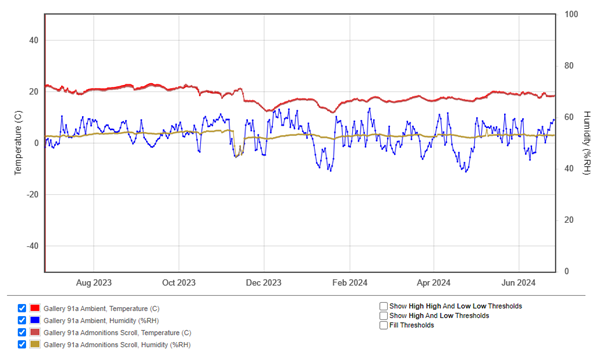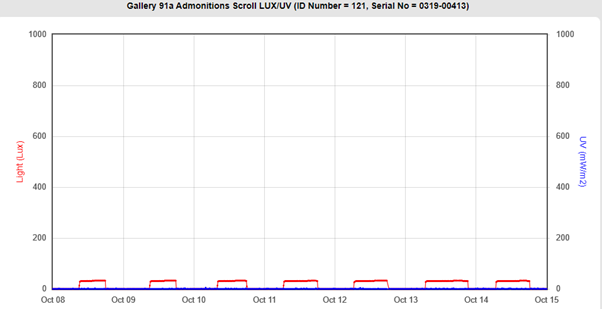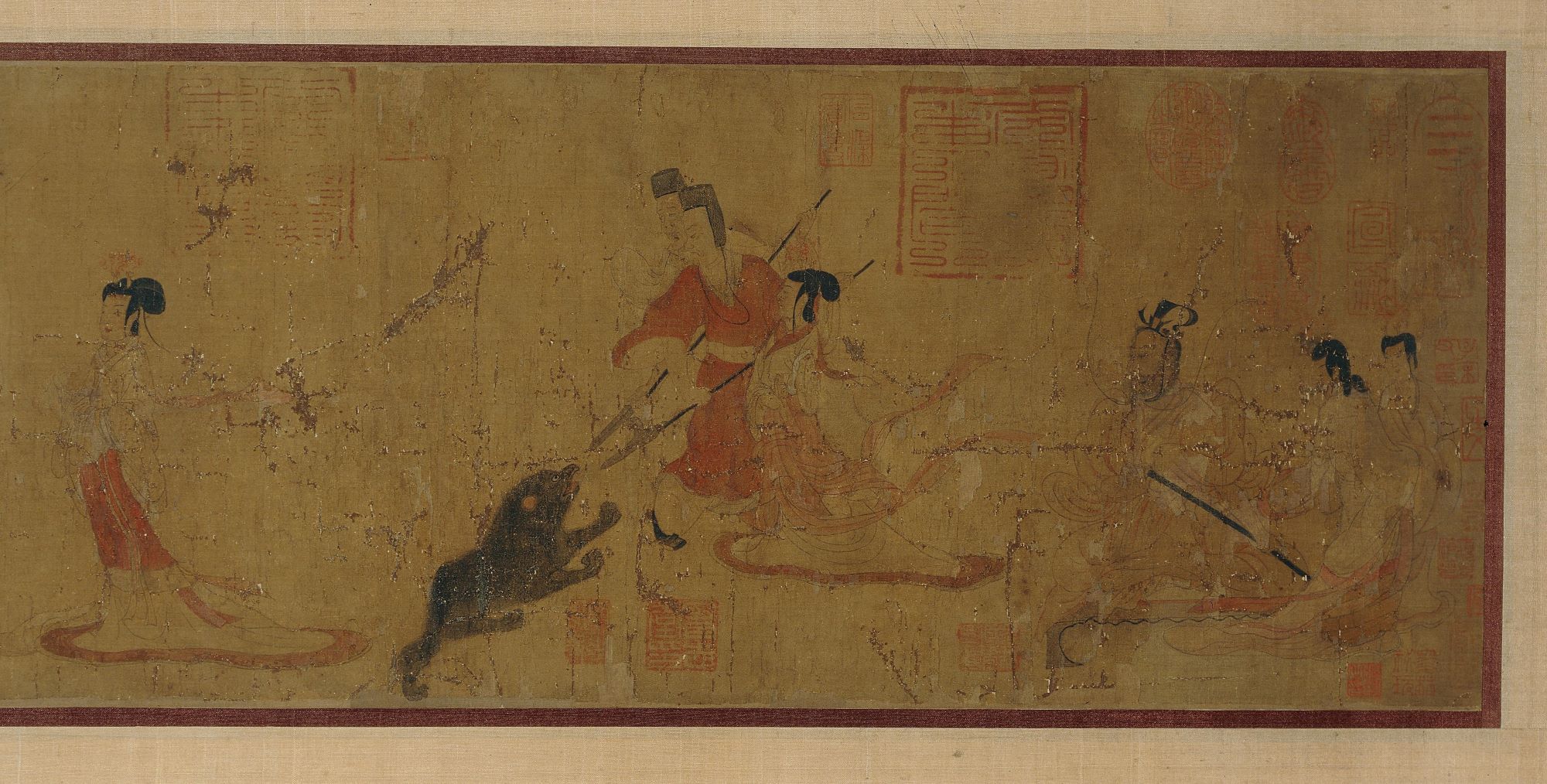The Art of Preventive Conservation: Ensuring the Longevity of the Admonitions Scroll

Preventive Conservation of the Admonitions Scroll
The Admonitions of the Instructress to the Court Ladies (Nüshi zhen tu 女史箴圖: British Museum OA 1903,0408.0,1) or Admonitions Scroll is a 7850mm long silk scroll with painting in black ink and colour. An eight-century copy of a fourth-century painting it is typically attributed to Chinese artist Gu Kaizhi (顧愷之), one of the most celebrated figures in Chinese art history.
Here are two examples of the depicted scenes:
The scroll was housed in the Forbidden City until the Boxer Rebellion of 1899-1901, when it passed into the custody of Captain Clarence Johnson who subsequently sold the work to the British Museum on 8 April 1903. It is not known how Capt. Johnson came into possession of the scroll.
British Museum conservator and Icon member Keeley Wilson shares a behind the scenes look at how the Scroll has been conserved for display.
The Scroll at the British Museum
In July 2013 following a decade of research, an expert meeting of East Asian painting conservators, scroll mounters and art historians was convened (Early Chinese Silk Paintings: Best Practice in Storage, Conservation Treatment and Display). To discuss the Admonitions Scroll, to assess the conservation approach and make plans for a redisplay.
Measures to Conserve the Scroll
There was a strong ambition and desire to have the Admonitions Scroll well displayed and as accessible as possible, whilst reducing the associated risks l as much as possible. To enable this, several different factors were considered and mitigated.
The gallery selected for the storage and display of the scroll was Gallery 91a, which benefits from full air conditioning and has been environmentally monitored for several years prior to the installation. Having this data allowed the preventive conservation and scientific research teams to assess both the needs of the scroll and the requirements for maintaining a stable and safe environment. Although the ambient conditions of the gallery would be appropriate for the long-term preservation of the scroll, we also felt that it was more than sensible to take a “belt and braces” approach to the safety of such a high profile and important work and a state-of-the-art showcase was commissioned.
Methods of controlling the environment: mechanical or passive conditioning?
Early discussions focussed on the method of controlling the environment in the event of a temporary loss of normal gallery conditions. The British Museum generally uses one of two methods: mechanical or passive conditioning. In the case of the Admonitions Scroll, passive conditioning was a superior choice for several reasons:
- Mechanical conditioning needs weekly maintenance, which would in turn require access to the showcase.
- While mechanical conditioning is generally very effective, as with any machine there can be problems which result in extreme fluctuations.
Because of these reasons a passive conditioning system was ultimately chosen, whereby cassettes of ProSorb are installed under the baseboard of the showcase. These provide buffering for any unexpected fluctuations and can be reconditioned annually, or sooner if necessary. The internal environment of the showcase is monitored using the Hanwell radiotelemetry system used throughout the museum. As can be seen from the data (Fig. 1) this methodology is working extremely well.

Figure 1. RH/T data for the Admonitions Scroll and ambient gallery conditions. The dip in November 2023 shows when calibration and maintenance took place.
The sprung wooden floor challenge
Another early concern was the sprung wooden floor of the gallery, which in other areas has been shown to transmit vibrations to the showcases, and in extreme cases to the objects. Given the extreme fragility of the silk substrate, there were concerns that if this proved to be the case in gallery 91a then there would be further losses to the material. This was addressed in a relatively low-tech, but very effective manner. The completed showcase is a double-sided structure, over 4m in length and manufactured from powder-coated steel. The case weighs c. 900kg, and this structure is such that vibrations from the floor are minimized extremely effectively. Within the pedestals at each end of the showcase, there are hydraulic lifting mechanisms that allow the glass cover to be lifted and closed smoothly, again minimizing the risk of vibrations or shocks to the object. Additionally, the scroll and colophon panels have been placed on top of a pH-neutral cotton mount board within rigid aluminium trays. These trays are on the baseboard of the case, which is then mounted to a drawer mechanism, allowing the scroll to be easily and safely slid out for condition assessments, photography, or study.
Protection measures against light exposure
As with many works on paper or silk, light exposure is a cause for concern. Given the age of the Admonition Scroll, it is prudent to exercise an abundance of caution in this matter. Not only are there concerns around fading and colour changing of pigments due to light, but the silk base of the painting is itself vulnerable to damage caused by exposure to visible light and UV, which has sufficient energy to break bonds within the protein molecules. In the long term, this causes the silk to degrade in the distinctive “shattering” pattern seen on many historic textiles.
This means that when the scroll is not on display, it must be maintained in total blackout. For this extraordinary work, it was decided that simply ensuring the ambient and gallery lighting was switched off was not enough, and so at an early stage in the design, there were discussions around motorised blinds installed inside the showcase to further protect the scroll from any light leaking into the room. This was soon reassessed though, as concerns were raised around the reliability of mechanical blinds, as well as the issue of heat transferring from any motor within the showcase space. The blinds were therefore re-engineered to a simple, hand-drawn mechanism that was specifically designed and tested to ensure that if any part of the system was to detach, nothing would affect the scroll.
It was decided that the scroll would be displayed for only several weeks a year. When the scroll is on display to the public, we need to balance the preservation needs of the object with the accessibility needs of the many visitors who travel to see the work. We work to achieve this by having lowered lighting levels in the galleries on the approach to the Admonitions Scroll to allow visitors’ eyes to adjust, and ensuring the ambient lighting in gallery 91a itself is kept low. This means that the light levels on the paintings can be maintained at ~40lux while still giving the visitors good viewing conditions. The in-case lighting is provided by LED projectors, which are housed in the end pedestals of the showcase. This has the dual advantage of avoiding any heat gain from the projectors, however minimal, and allowing maintenance of the LED system without needing to access the display volume of the showcase. The main light control measure, however, is provided by the restricted access to the scroll. By only having the gallery open to the public for six weeks of the year, we can comply with the strict 30kLux annual budget that aims to prolong the life of the work for as long as possible. The light levels in the showcase are measured using the Hanwell radiotelemetry system used throughout the museum which provides live data. As can be seen in the graph (Fig. 2) this also allows us to see if there have been malfunctions in the timer system and ensure this would be dealt with quickly.

Figure 2. Lux/UV data for the Admonitions Scroll.
Protection measures against pollutants
The final consideration for the Admonitions Scroll was the impact of pollutants. As with all projects in the British Museum galleries, the materials and coatings used in the construction of the showcase were tested using our standard 3-in-1 Oddy Test methodology and were only considered for use if they were rated as suitable for permanent use with the collection. The Oddy Test, however, relies on pollutants causing reactions with copper, lead, or silver, and so can miss potential VOCs that affect other materials like silk or paint, as well as being unable to predict the results of combinations of materials. Therefore, adsorbent MicroChamberR and pHoton papers folded in concertinas were installed on the case floor and the underside of the aluminium tray, to try to mitigate any accumulation of unforeseen pollutants. For the first year following the redisplay, there was also a lead coupon in the display volume to monitor for organic acids, but following no reaction after this time, this precaution was discontinued.
Conclusion
The Admonitions Scroll has had a long and complex history, involving multiple historical campaigns of restoration. The project undertaken by colleagues at the British Museum from 2009-2014 was the result of years of work by conservators, scientists, curators, and many others to understand the construction and condition of the scroll, and the potential routes that could have been taken at the time.
The Scroll is not only a significant artistic work, but also an important cultural document, providing insight into the values and aesthetics of Chinese society of the past.
Following a meticulous consolidation project, the subsequent redisplay has served to balance the competing requirements of accessibility and preservation while still permitting access for research as needed. The preventive conservation of the Admonitions Scroll should continue to allow this access for centuries to come.
The Admonitions Scroll is on display right now at the British Museum in Gallery 91a until 18 August 2024. If you would like to see it, please book your visit on the British Museum website.
Text: Keeley Wilson
We thank Keeley Wilson and the British Museum for providing the information and images for this article.


